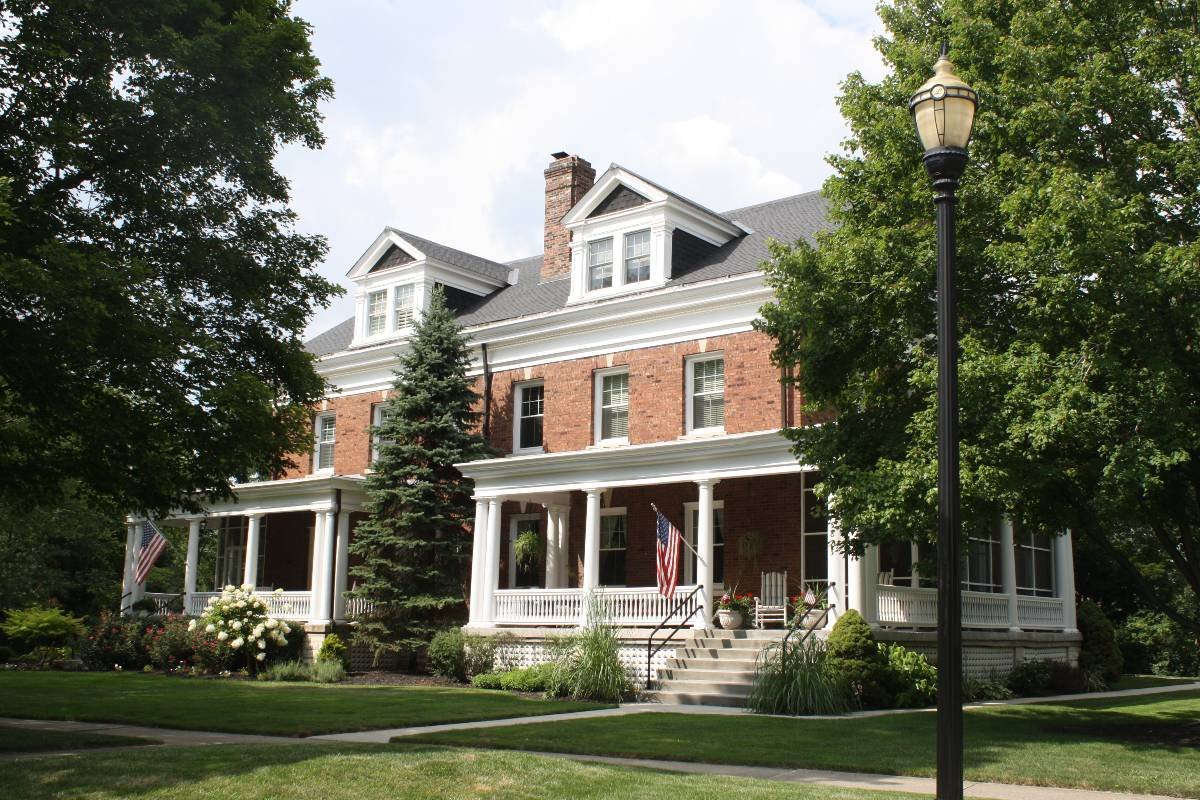12. Army, National Guard, and Navy Cherish Heritage in City
James Glass
Column that appeared in the Indianapolis Star onThe themes of tradition and heritage are important to all the branches of military service in the United States, and evidence of the high regard held for heritage can be seen in several historic training facilities in Indianapolis and Marion County. At the former Fort Benjamin Harrison, located along East 56th Street in the City of Lawrence, the sense of the past is strong. There, in 1908, one of the first modern Army posts was established to provide training for a national army made up of both regular troops and state national guards. Fort Harrison contained 2417 acres of rolling topography along Fall Creek suitable for training exercises and a level area to the south where drilling was conducted on a spacious parade ground, and brick and stone Georgian-style buildings were constructed around the Lawton Loop for officer quarters and enlisted man barracks. As many as 10,000 soldiers encamped at the new fort during World War I to receive training in their specialized support functions and in trench warfare. During the Second World War, 200,000 men and women were processed into the Army at the Fort Harrison induction center. After the war, training became the principal mission of the installation, and between the mid-1960s and the early 1990s, Fort Harrison provided specialized education to 20,000 enlisted soldiers, non-commissioned officers, and officers per year in finance, broadcasting and journalism, management, and recruiting. At the same time, the troops received training in combat and in providing support functions in a war zone. In 1992, after 85 years of active service, the Base Closure Commission recommended that Fort Harrison be closed.
Retired Maj. Gen. Ronald Brooks, the last commander of Fort Harrison, worked closely with former Mayor Tom Schneider of Lawrence and the Fort Harrison Re-Use Authority to see that the historic portions of the post were preserved and compatible civilian uses found for the oldest sections. For example, he spent funds during the transition period repairing the officers’ quarters and former barracks around the Lawton Loop. Gen. Brooks says today that the Loop was part of the Army’s history and it was his mission to take care of it and facilitate its preservation after closure.
The efforts to preserve the heritage of Fort Harrison appear successful. The officers’ quarters have become private residences. The barracks and support buildings of the early 20th century have become business offices. The former hospital is now a conference center and restaurant. The State of Indiana has acquired the wooded training area and converted it into a state park. Nearby, the former officer’s club and golf course have become a state park course and resort. New buildings, including the Lawrence City Hall, fit in, under design controls that favor the Georgian style and red brick of the fort buildings.
In downtown Indianapolis, Facility Commander Lt. Col. James Gentry says that the 76th Separate Infantry Brigade of the Indiana National Guard is proud of its home at the Tyndall-Moorhead Armory at 711 N. Pennsylvania Street. Gentry feels a sense of awe for the history that has happened in the historic structure, built in 1926-27 as the division headquarters for the National Guard. There generations of Hoosier soldiers have been trained and deployed for service in five major wars. Their associations with the four-story limestone building have made it an indelible part of the Guard’s identity. He also says that the distinguished architectural design and richly detailed façade and interiors are the envy of other Army brigades who visit it.
And at the Art Deco-style Heslar Naval Armory, 1626 W. 30th Street, the Naval Reserve Center and State of Indiana, which owns the Armory, make every effort to preserve the historic features there. Naval reservists from Indiana and the Midwest have received training for active duty service at the armory since 1938. Originally it provided sailors with simulated experiences in serving on board ships and engaging in and surviving naval battles. Today, both Navy and Marine reservists obtain education in their specialized functions as part of regular Naval and Marine units two weeks per year and regular classes monthly at the armory. Commander J.R. Reed, Special Projects Officer, says the Navy loves its traditions, and tradition pervades the building, ranging from oil paintings of famous American naval battles in the drill hall to nautical ropes attached to the rails of the stairwells.

Former Officer Quarters in Lawton Loop, Fort Benjamin Harrison, 2017. James Glass
